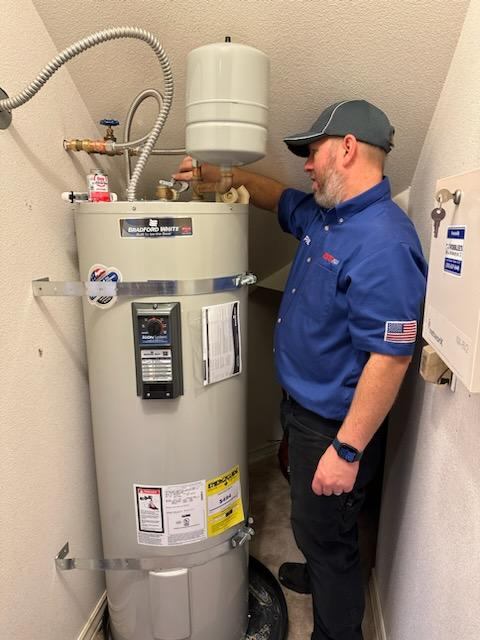 Oct 26, 2024
Oct 26, 2024
Draining a water heater at least once every year is an important part of water heater maintenance. The process is all about emptying the tank to remove sediment or buildup that collects at the bottom of the water heater tank. Some of the benefits of draining a water heater include energy efficiency, increased life expectancy, and better water quality. It’s important to know the steps to drain a water heater so that you can empty the hot water tank as needed and keep the unit in good working order.
In this guide, Rooter Man Plumbing provides you with a step-by-step guide for draining a water heater. As seasoned plumbers specializing in water heater installation, we are familiar with the workings of different types of water heaters. If you have any problems with draining your water heater, call us for help.
This step is important to control water flow and ensure safety and efficient drainage. Locate the shut-off valve on the cold water supply line that feeds into the heater and turn it clockwise to shut off the water supply completely. If it’s a ball valve, turn the handle so that it’s perpendicular to the pipe (90-degree angle).
Now that you’ve shut off the water, attach a garden hose to the drain valve and open it. The valve is positioned at the lower part of the tank, though some models have a different configuration. Open the drain valve slowly and direct it to a bucket or a floor drain.
Once you’ve emptied the tank, close the drain valve and reopen the water supply. If you’re not sure how to drain your water heater, call a trusted plumbing repair service for help. It is important to exercise caution when you’re not sure about anything to do with water heaters. These appliances can be dangerous if you make mistakes during DIY repairs. Seeking professional help is important when you’re in doubt.
If you have hard water or unfiltered water in your home, sediment buildup at the bottom of your water heater is inevitable. The particulate matter and hardness minerals in the water will accumulate at the bottom of the tank to form a layer that will reduce the efficiency of the unit over time. If you don’t address the problem in a timely manner, you’ll begin to get discolored water, not to mention your heating bills going up.
The most obvious sign of sediment buildup in a water heater is noisy operation. You may hear popping, banging, or rumbling sounds coming from the tank. As time goes by, the problem will worsen and the volume of hot water will be significantly reduced. Another problem you’re likely to experience is fluctuating water temperature. If you’ve noticed these warning signs, call the experts at Rooter Man Plumbing for water heater repair. However, it reaches a point where repairs won’t suffice. If you continue to experience issues after draining your water heater, it may be time to say goodbye and have a professional plumbing service install a new water heater.
Rooter Man Plumbing is the go-to plumbing company for water heater replacement and all of your water heater needs. Call us today if you need professional water heater services.